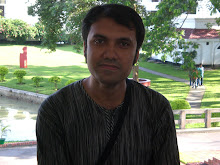http://www.dawn.com.pk/2007/11/22/int14.htm
Nov 22, 2007, Thursday
Bangladesh relief camps run out of foodgrain
By Julhas Alam
Associated Press Writer
PURBA SARALIA (Bangladesh): Overburdened relief centers scrambled on Wednesday to help tens of thousands of scared and hungry cyclone survivors, as worried aid groups tracked an outbreak of waterborne illness that reportedly left two children dead.Fistfights broke out in some relief camps, as ever-growing crowds of people struggled to get help after last week’s cyclone, which killed at least 3,100 people and left many times that number homeless.
In Purba Saralia, nearly 2,000 people descended on a government-run relief camp, hurriedly set up in a firehouse, where officials only had food for 1,200.
“This is a crisis. I don’t have enough food and we have no work,” said Lal Mia, a farmer waiting in line.A few kilometers away, in the village of Basal Bar, fistfights broke out among cyclone victims as thousands of people, who gathered before dawn, waited for rice at a food distribution center set up by a local aid group.
The coastal area battered by Cyclone Sidr, meanwhile, has been struck with waterborne diseases, Dhaka’s Daily Star newspaper reported, quoting local health officials.
Two children died of diarrhoea in the hard-hit district of Patuakhali, the newspaper reported.
The spread of waterborne diseases, which can spread quickly, is a major worry in the aftermath of such storms.Health officials were bracing for an outbreak of diarrhoea because the cyclone had destroyed many safe drinking water wells, said Mohammad Abdul Baset, a government health official in the town of Barisal.
Health workers were distributing water purification tablets among survivors along with safe drinking water, he said.In Dhaka, the capital, the Health Ministry said it has opened a special desk to monitor any diarrhoea outbreaks.
It could not immediately confirm the two reported deaths.“We are concerned about diarrhoea,” Renata Dessallien, the top UN official in Bangladesh said.
“There is no question this will be a problem.”
She said water usually gets contaminated by diarrhoea-causing bacteria following floods and cyclones.
“But I understand that the Health Ministry has a stock of medicines and the most important thing now is to get the supplies to the affected areas,” she said.
Meanwhile, some people started to rebuild their flimsy huts in Balkultola village using bamboo poles, coconut leaves and jute sacks.Abdul Hamid Mir, a 50-year-old farmer said that there was no clean drinking water and that he was sleeping outdoors, near to where his house used to be.
Aid agencies and UN officials were visiting the affected areas to assess the damage and the aid need, said Sakil Faizullah, a spokesman for the United Nations Development Program in Bangladesh.Food, fresh water and temporary shelter had still not reached many of the exhausted survivors six days after the cyclone slammed into the low-lying country.
“At this time we will welcome support from the international community,” said a statement from the Bangladesh Foreign Ministry.
“We are doing as best as we can do ourselves.”In a televised speech on Tuesday, the country’s interim leader, Fakhruddin Ahmed, described the cyclone as “a national calamity” and urged citizens to help the affected people.
The government said international aid worth about $120 million had so far been promised.
But relief items such as tents, rice and water have been slow to reach most survivors of the worst cyclone to hit Bangladesh in a decade.The European Commission announced aid of $9.6 million on Tuesday.
The American Red Cross said it would provide $1.2 million to help get clean water to the survivors and build emergency shelters.
“The problem is that aid workers need hours to reach these remote areas.
Poor communications are also hampering our work,” said Anwarul Huq, a spokesman for the Bangladesh Rural Advancement Committee, the country’s largest non-profit development organisation.
In many places, aid workers had to clear fallen trees and debris to get to survivors, said Huq, adding that rescuers also were facing a shortage of boats.Nearly 4 million people have been affected by the cyclone, which also destroyed 458,804 houses.
Another 665,529 houses have been partially damaged, the ministry said.Local media reports say more than 4,000 people may have been killed. The Bangladesh Red Crescent Society has suggested the final figure could be around 10,000.—AP
Sunday, January 20, 2008
Subscribe to:
Post Comments (Atom)

No comments:
Post a Comment